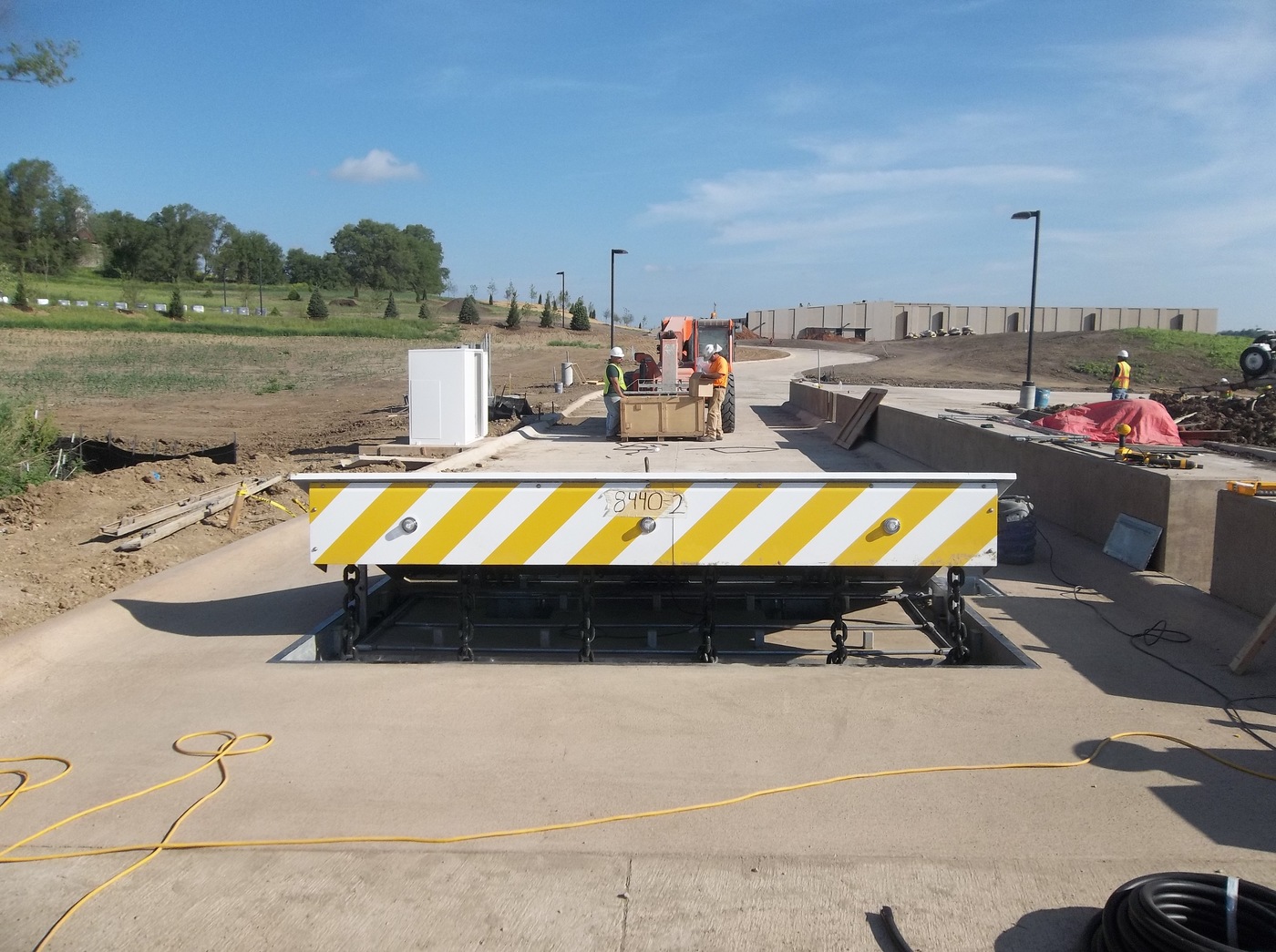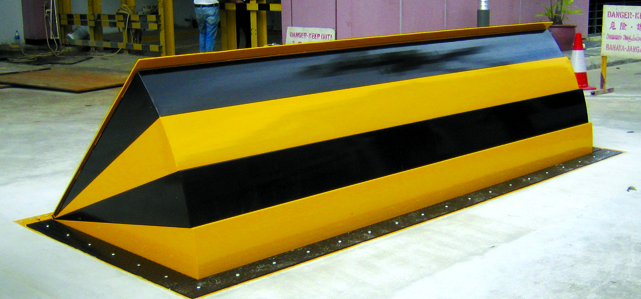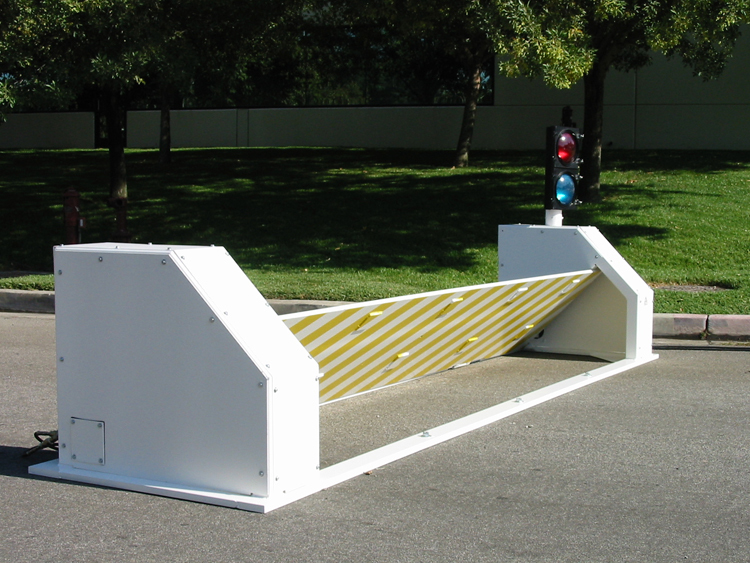The smart Trick of Wedge Barriers That Nobody is Talking About
An Unbiased View of Wedge Barriers
Table of ContentsThe Greatest Guide To Wedge BarriersThe smart Trick of Wedge Barriers That Nobody is Discussing


18 may be done faster, quickly, and expense efficiently. FIG. In particular personifications, the anchor 30 may be a steel frame including plates, beam of lights(e. g., I-beams ), and/or various other frameworks that are protected within the structure 14, which might be concrete. At the surface 12, a top side 28 of the anchor 30 may go to the very least partly revealed
, therefore enabling the attachment of the obstacle 10 to the anchor 30. g., threaded holes)in several beams or plates of the anchor 30 might be revealed to the surface area 12. In this way, screws 32 or other mechanical fasteners might be used to safeguard the barrier 10 to the anchor 30. As the obstacle 10 is mounted to the surface area 12 of the foundation 14, collection of debris and various other material underneath the obstacle may be minimized, and parts of the bather 10 may not be revealed to below quality atmospheres. As suggested by recommendation numeral 52, the lifting device 50 includes elements disposed underneath the wedge plate 16. For instance, the elements 52 beneath the wedge plate 16 might include an electromechanical actuator, a cam, several camera surfaces, and so forth. In addition, the lifting device 50 consists of a spring assembly 54
The spring pole 58 is coupled to a cam(e. g., web cam 80 shown in FIG. 4) of the lifting mechanism 50. The springtimes 60 disposed regarding the spring pole 58 are kept in compression by spring supports 62, consisting of a fixed springtime assistance 64. That is, the fixed spring assistance 64 is repaired about the foundation 14 and the remainder of the bather 10.
Wedge Barriers Fundamentals Explained
The continuing to be pressure applied to
the cam camera deploy release wedge plate 16 may might provided by an electromechanical actuator 84 or other various other. The spring assembly 54 and the actuator 84(e. Wedge Barriers. g., electromechanical actuator)may operate together to convert the webcam and lift the wedge plate 16.
As stated over, the spring assembly 54 puts in a continuous pressure on the webcam, while the electromechanical actuator may be managed to apply a variable web pressure on the cam, thus allowing the lifting and decreasing( i. e., releasing and retracting )of the wedge plate 16. In certain personifications, the consistent pressure used by the spring assembly 54 may be flexible. g., electromechanical actuator) is disabled. As will be valued, the spring assembly 54 may be covered and shielded from debris or various other elements by a cover plate(e. g., cover plate 68 revealed in FIG. 4) that might be significantly flush with the raised surface 38 of the foundation 14. As mentioned over, in the released setting, the wedge plate 16 offers to block gain access to or traveling beyond the obstacle 10. For example, the obstacle 10(e. g., the wedge plate 16 )might block pedestrians or lorries from accessing a property or path. As talked about above, the barrier 10 is affixed to the support 30 safeguarded within the foundation 14,

front brackets 71. Because of this, the linkage assemblies 72 might pivot and revolve to make it possible for the collapse and expansion of the affiliation assemblies 72 during retraction and deployment of the bather 10. The linkage settings up 72 reason activity of the wedge plate 16 to be restricted. As an example, if a lorry is taking a trip in the direction of the deployed wedge plate 16(e. For instance, in one condition, the security legs 86 may be prolonged throughoutupkeep of the barrier 10. When the security legs 86 are deployed, the security legs 86 sustain the weight of the wedge plate 16 versus the surface 12. Consequently, the lifting device 50 may be shut off, serviced, gotten rid of, replaced, and so forth. FIG. 5 is partial perspective sight of an embodiment of the surface-mounted wedge-style barrier 10, highlighting the cam 80 and the webcam surface areas 82 of the lifting mechanism 50. Specifically, two webcam surfaces 82, which are described as reduced webcam surface areas 83, are positioned listed below the camera 80. The reduced cam surfaces 83 might be taken care of to the surface 12 (e. As an example, the lower web site link cam surfaces 83 and the placing plate 85 might form a solitary piece that is protected to the support 30 by screws or various other mechanical bolts. In addition, 2 webcam surface areas 82, which are described as upper camera surface areas 87, are positioned above the cam 80 and paired to (e. In other personifications, stepping in layers or plates might be placed between the surface 12 my sources and the reduced cam surface areas 83 and/or the wedge plate 16 and the upper camera surface areas 87 As stated over, the camera
80 equates along the web cam surface areas 82 when the wedge plate 16 is raised from the withdrawed placement to the deployed position. Furthermore, as mentioned over, the spring setting up 54 (see FIG. 3 )may give a force acting upon the web cam 80 in the direction 102 by means of spring rod 58, which may decrease the pressure the electromechanical actuator 84 is needed to relate to the cam 80 in order to activate and lift the wedge plate 16. 1 )to the released position(see FIG. 4). As shown, the cam 80 includes track wheels 104(e. g., rollers), which call and convert along the cam surface areas 82 during operation.